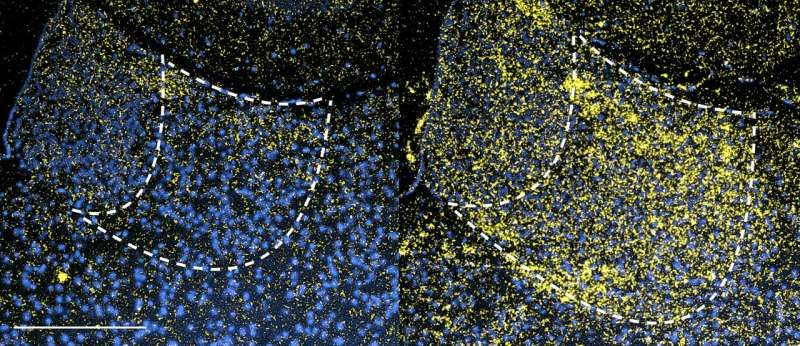Abstract
Light therapy is one of the effective treatments used for seasonal affective disorder (SAD), a type of depression related to changes in seasons.
A group of scientists from the University of Friborg used mouse models to investigate how light therapy affects mood.
Light therapy triggered the PER1 gene (circadian clock gene) in mice and showed an antidepressant effect.
What Is Seasonal Affective Disorder (SAD)?
SAD is a kind of depression that is triggered by a change in seasons. It happens around the same time every year and typically gets worse in the winter. Symptoms can last for approximately 40% of the year.
SAD is known to affect 11 million people in the U.S. every year.
Some symptoms of SAD are:
- Feeling less energetic
- Having an increased appetite
- Having thoughts of suicide
- Feeling sad and hopeless
- Feeling restless
Light Therapy For Depression
Light therapy is also called phototherapy. It is a treatment in which a person is exposed to an artificial light source of a specific wavelength. It is used to treat SAD, other types of depression, as well as sleep disorders.
Light therapy or phototherapy is a treatment in which a person is exposed to an artificial light source of a specific wavelength.
Light therapy is used to compensate for the lack of exposure to sunlight. The light seems to trigger the release of the feel-good hormone serotonin, which helps improve mood.
Research suggests that light therapy in the night activates the CLOCK gene PER1, which appears to improve symptoms of depression.
What Is The PER1 Gene?
PER1 gene or Period 1 gene or circadian clock gene responsible for sleep-wake cycles and mood swings. The PER1 gene is found in the suprachiasmatic nucleus (SCN). The SCN is located in the hypothalamus of the brain and is the central pacemaker of the circadian timing system.
The PER1 gene is light-sensitive. Upon exposure to light, it switches the body to awake and alert mode with elevated energy levels.
Resetting Circadian Rhythm Could Help Treat SAD
Researchers exposed mice to a pulse of light at different points during the night and then tested them for depressive behavior. They found that light exposure at the end of the dark periods (2 hours before daytime) had an antidepressant effect on the mice.
The pulse of light, activated the PER1 gene in a region of the brain called lateral habenula, which plays a role in the mood. It also resulted in the resetting of the circadian rhythm. This caused a spike in energy levels, which in turn, brought about antidepressant effects.

Image: PER1 gene expression before (left) and after (right) 15-minute light therapy
Light therapy at other times did not seem to have any effect. When the PER1 gene was deleted, the mice did not experience the antidepressant effect of light therapy.
Mice responding to light therapy during the early hours before daytime is similar to findings in humans - patients with SAD responded better to light therapy in the early morning than in the evening.
However, since mice are nocturnal creatures, scientists caution against making too many direct comparisons to humans.
Video
Summary
- Light therapy is a common treatment used for seasonal affective disorder (SAD).
- Researchers found light therapy in mice showed an antidepressant effect by triggering the PER1 gene (circadian clock gene) during the dark time.
- When activated by light, the PER1 gene switches the body to alert and awake mode, thereby boosting energy levels and alleviating depression symptoms.
- Light therapy appears to work better in the early morning than in the evening to awaken the moods.
References
- https://californianewstimes.com/scientists-show-how-light-therapy-treats-depression-in-mice-model/431490/
- https://techilive.in/scientists-show-how-light-therapy-treats-depression-in-mice-model-light-activates-the-circadian-clock-gene-period1-in-a-brain-region-that-affects-the-mood/
- https://www.dailyadvent.com/news/30661cc38ea04d0ab867466ce1bff87a-Scientists-show-how-light-therapy-treats-depression-in-mice-model
- https://newsatw.com/scientists-show-how-light-therapy-treats-depression-in-mice-model/
- https://www.oatext.com/light-deprivation-an-efficient-way-in-inducing-depression-like-behavior-animal-models.php
- https://www.healthline.com/health/depression/light-therapy
- https://www.ncbi.nlm.nih.gov/pmc/articles/PMC5403163/




